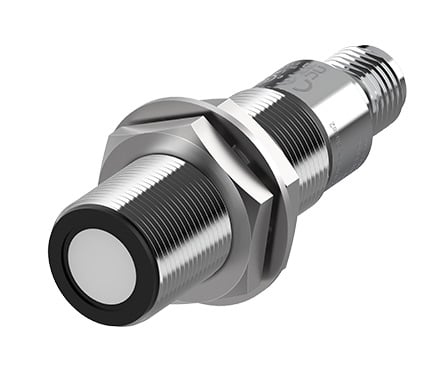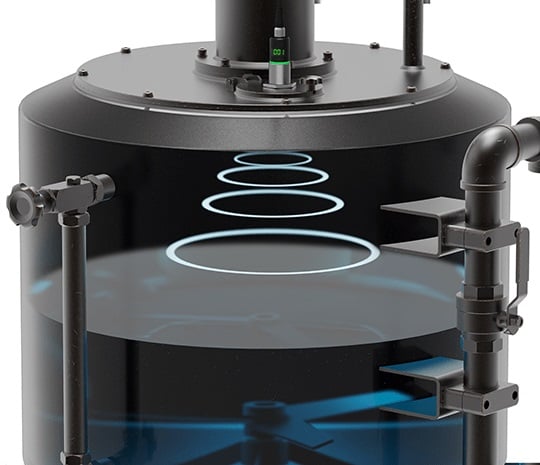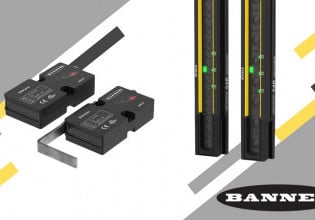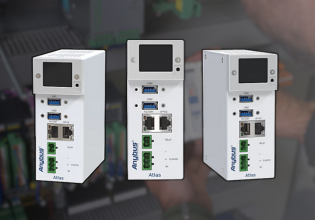UTR Sensors Deliver Ultrasonic Part Detection From Autonics
The new cylindrical ultrasonic sensor adapts to a wide variety of part detection or level measurement applications, providing IO-Link, analog, and digital outputs to fit various control systems.
Autonics, a global supplier of sensors, automation controllers, safety components, and vision systems, has recently announced the UTR series of cylindrical ultrasonic sensors for part detection using sound waves. The sensors include several features such as LED displays, temperature correction, digital or analog outputs, IO-Link, and background and foreground filters.

The new UTR ultrasonic sensor from Autonics.
Ultrasonic Object Detection
Similar to proximity sensors that detect eddy currents in materials, an ultrasonic sensor uses sound waves to detect objects at a distance. The sensor emits a high-frequency sound wave and then measures the time it takes for the waves to bounce off an object and return, determining how far away the object is. This time is then compared to a threshold and the sensor will then output a high or low voltage signal depending on the detection status of the object in the system.

Optional LED display and signal ring indicate current outputs and signal.
UTR Ultrasonic Sensor Series
This series of ultrasonic sensors is capable of detecting objects up to eight meters away or detecting the level of liquid, solids, or even powder materials. The sensors come in a 316L stainless steel body with a diameter of either 18 mm or 30 mm. Two different output models can also be chosen: a combination digital/analog or purely digital output. The analog output can be a combination of both current and voltage, or it can be limited to current alone.
The sensor can be ordered with a bright indicator ring and LED display that can be used for teaching setpoints or no indication. An IO-Link model can also be ordered for dynamic configuration and real-time diagnostic functionality. Specially designed software can be used to program the sensors, or dedicated programming units can be purchased separately.
Foreground Suppression
When detecting parts, other objects in the background or foreground are often picked up by the sensor. When using an ultrasonic sensor, which blasts a sound wave in one direction and relies on some of that sound bouncing back, false detections can cause nuisance faults or unwanted downtime. The UTR series of sensors has an optional foreground filter, moving average filter, background filter, or a combination of moving average with foreground/background filter. These filters block unwanted objects from being detected and can be adjusted based on the user's requirements.
Air Temperature Correction
One downside to ultrasonic detection is that air temperature can affect the distance measurement. With the UTR sensors, a built-in temperature-tracking algorithm is used to compensate for temperature swings and provide accurate distance detection. The algorithm also removes noise and disturbances from the values providing a more accurate, steady measurement.

Demonstrating the UTR series ultrasonic detection of liquids.
Ultrasonic vs. Proximity Sensing
Proximity sensors are very reliable when used with materials that emit eddy currents or in stable environments. When you have unique scenarios that require level measurements or detection of objects that do not work with proximity sensors, using an ultrasonic sensor might be a better choice. The UTR series of ultrasonic sensors are customizable for different detection and level measuring scenarios, plus they can be outfitted with digital readout displays and indicator rings.
All images used courtesy of Autonics






